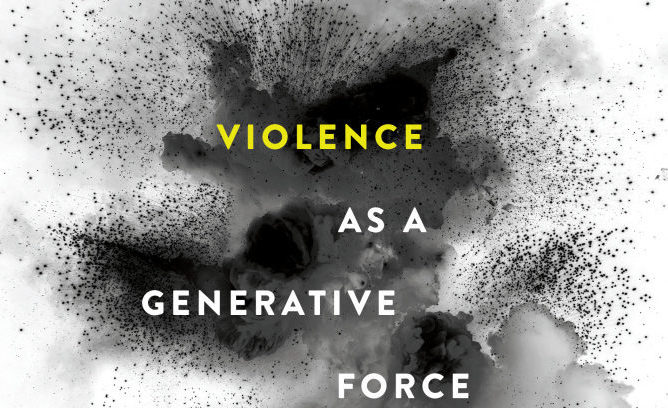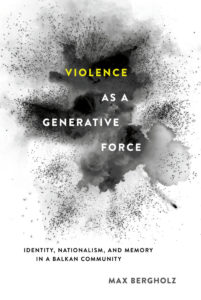
Violence as a Generative Force: Identity, Nationalism, and Memory in a Balkan Community by Max Bergholz
 This is part of our special feature on Nationalism, Nativism, and the Revolt Against Globalization.
This is part of our special feature on Nationalism, Nativism, and the Revolt Against Globalization.
There is an art to communicating the urgency, excitement, and significance of microhistory. Carlo Ginzburg, of course, remains the doyen in this regard. His 1993 Critical Inquiry article “Microhistory: Two or Three Things I know about it,” still inspires in its intellectual generosity, invoking Eduardo Grendi’s term, “the exceptional normal” as well as the inspiration of Tolstoy’s capacity to deliver a sense of “the physical, palpable certainty of reality” through prose (Ginzburg 28).
Max Bergholz’ excitement at investment in and knowledge of the events around Kulen Vakuf in 1941 are beyond question. His framing of the archival discovery story speaks volumes to his meticulousness, focus, and commitment to contextual knowledge as the sine qua non of historical scholarship. He also has an eye for telling detail, offering cinematic-style close-ups that fill the frame and flood the reader’s senses. There is undoubted power in the image of the single survivor from a massacre licking the rocks to quench his thirst; or the pseudo-speciative words, “Stop these dog-bitches from delivering more puppies!” that land like a slap to our ideas of decency. It is indelibly clear from Bergholz’s sources that norms of co-existence, tolerance, and universalizability central (in my vision) to common humanity were cast away in the aftermath of Yugoslavia’s collapse in April 1941.
At first blush, this sounds like a familiar tale. Advocates of simplified culturalist explanations of Balkan violence—those who adopted the 1990s mantra of “ancient hatreds” or cross-generational score-settling—might find affirmation in Bergholz’s narrative. Such re-appropriation of Bergholz’s archival mining seems especially likely in regard to the latter part of the book, which documents cases of ethno-national name-calling in the context of state-led efforts to propagate an ideology of “brotherhood and unity.” So for those of us who struggle to challenge the persistent stereotype of the Balkan sprachbund as always on the brink of deadly fracture along primordial lines of religious, linguistic, or cultural, distinction, then, Bergholz’s case-study poses a challenge.
Bergholz recognizes this, and the overall arc of the argument represents a clear-eyed effort to come to terms with the dilemma. One key concept that he introduces is the notion of “sudden nationhood;” acknowledging the key theoretical influence of Rogers’ Brubaker’s “nation-ness,” Berghloz painstakingly and adroitly marshals his empirical material to posit that the basic unit of analysis in understanding escalatory ethno-national violence is the event. Acts of killing, in his causal framework, are the triggers that bring ethno-nationalist solidarity into being. But they do so, in Bergholz’s argument, by animating what social psychologists have termed pre-existing schemas in people’s minds. Violent events may trigger a switch in the script by which people make sense of the world.
This narrative owes much to a commitment to providing causal explanation, which I imagine arises from Bergholz’s engagement across disciplinary lines. As well as drawing on Rogers Brubaker’s work in sociology, he takes the concept of mental schemas from social psychology; and makes frequent references to works in political science, including seminal work by Stathis Kalyvas and Elizabeth Wood. He engages less with work by anthropologists on the phenomenon of violence, and violence in Eastern Europe, in particular. In the 1990s, Tone Bringa, Pamela Ballinger, Anastasia Karakasidhou, and (sociologist) Keith Doubt all offered insights on the micropractices through which “nations” demanded human loyalty. Earlier ethnographic work by (among others) Vera St Erlich in the 1930s and Christopher Boehm in the 1960s, might also have provided context for the events where Bergholz drills down so exhaustively.
One consequence of this asymmetry in cross-disciplinary borrowing is an emphasis on Newtonian imagery and metaphor. Among the terms the author uses about violence are “torrent,” “chain reaction,” and “explosion” (238); “cascading waves” and “convulsive shockwaves (254).” Language matters: these choices reflect Bergholz’s commitment to the evidence of what happened, rather than speculating on individual motivations or thought processes of his key characters. While admirable in its anti-presentism, this behaviorist frame does serve simultaneously to “black-box” these individuals one from another. The effect is also to privilege those few reflective or introspective voices that left archival traces—especially those that made it into local historian Esad Bibanović’s account, which Bergholz clearly trusts.
Those emotionally-laden close-ups, however, highlight a missed opportunity to reflect more extensively on the “orders” of cultural analysis, as described in Clifford Geertz’s classic essay in The Interpretation of Cultures. Like many historians, (and as reflected in his bibliography), Bergholz makes clear distinctions between sources, categorized for example either as “archives” or “published documents,” “memoirs and novels” or “secondary literature.” All, of course, are made or manufactured. Though we may imagine that those with greater proximity to “ground-zero”—whether temporal, linguistic, cultural or geographic—are incrementally more faithful, authentic, actual, or reliable—to do so in fact assumes that each is as invested in the same enterprise of “truth-recovery” as we are. It is, one might say, an act of meta-presentism. It assumes that it is only at a distance that space opens for invention: in other words, that those with first-hand knowledge or experience are close cognitive kin to us as scholars, for whom deliberate distortion, or self-deception, are traits that we consider shameful, and avoid to the best of our abilities.
In this regard, Bergholz’s investment in local historian Esad Bibanović acquires new significance. Words describe what deeds accomplish; they inhabit separate domains. Yet—as with any narrative produced with care and attention—Bergholz offers us the ground to derive a very different interpretation. Where he emphasizes the generative power of “killing on an ethnic axis,” he simultaneously shows us the effects of narrating killing on an ethnic axis. Bibanović (and indeed Bergholz) are not simply expressing reality; they act by narrating. And characters in the action also engage in speech-acts; Stevan Pilipović Maćuka, for example, and Gojko Polovina, initially use words to try to rein in violence against people and property. They fail; Bergholz quicly moves on to examine how they then respond to violence with de-escalatory violence of their own. Those efforts also fail; confirming the bleak story of entropy in which the emergence of ethnonational differentiation passes as natural.
Perhaps this is the reality of human affairs; certainly it is the currency of realism among political scientists. Bergholz challenges the casual pseudospeciation of some U.S. based social science, which makes “ethnic groups” primary actors in some parts of the world; but to judge by his conclusion, remains committed to a cognate methodological individualism. He closes the book by asking whether the resort to violence against those identified as “other”—the original sin of ethnonationalist thinking—is “ultimately… a choice that we all hold in our hands?”
This rhetorical evocation of we, the people, reminds us, the scholars, that deed, word and thought are intertwined and co-constitutive. This I take as the central point that weaves together several strands of scholarship sensitive to the enduring shape that culture and history impose on ostensibly autonomous individual decision-making. Among these strands are works by Pierre Bourdieu on habitus; Marilyn Strathern on “dividualism;” Alexander Wendt on “quantum mind;” and, to return to where I began, Carlo Ginzburg’s microhistory, which recognizes that “any social structure is the result of interaction and of numerous individual strategies” (1993:33). Each of these approaches insists on the significance of understanding context—whether constructed through the shared consumption of news stories (how had the people of Kulen Vakuf interpreted the Skupština shootings of June 1928, or King Alexander’s assassination in 1934?), common assumptions about shame, humiliation and gender (what makes killing men’s work?), or the historical capacity of religious belief systems to keep antisocial behavior in check (when, if ever, do communities unite against thugs and murderers?)
I found this book absorbing, vivid, and stimulating. Both author and Cornell University Press deserve credit for bringing this compelling story to light and to life. As an anthropologically-trained, historically-oriented, Balkan-immersed archive-junkie, I was drawn to the multiple narratives on offer here, and the switching back and forth—from the sequence of events in 1941, through the elisions, echoes, and evocations of the 1960s, to Bergholz’s own modern-day sleuthing in the face of obstacles. Violence as a Generative Force urges us to invert our assumptions about the processes by which, to paraphrase Rebecca West, the idea of violence is dragged across the threshold of the world of fact. It challenges advocates of closely-grained and ostensibly idiographic investigation, whatever their disciplinary training, to enter into dialogue with their nomothetically-oriented colleagues. And it commands admiration for its willingness to take on “inconvenient facts” and address an overlooked moment in history, as a means to disrupt persistent and prevalent ideas about groupness in the Balkans.
Reviewed by Keith Brown, Arizona State University
Violence as Generative Force: Identity, Nationalism and Memory in a Balkan Community
by Max Bergholz
Publisher: Cornell University Press
Hardcover / 464 pages / 2016
ISBN: 978-1-5017-0492-5
To read more book reviews, please click here.
Published on February 1, 2018.




